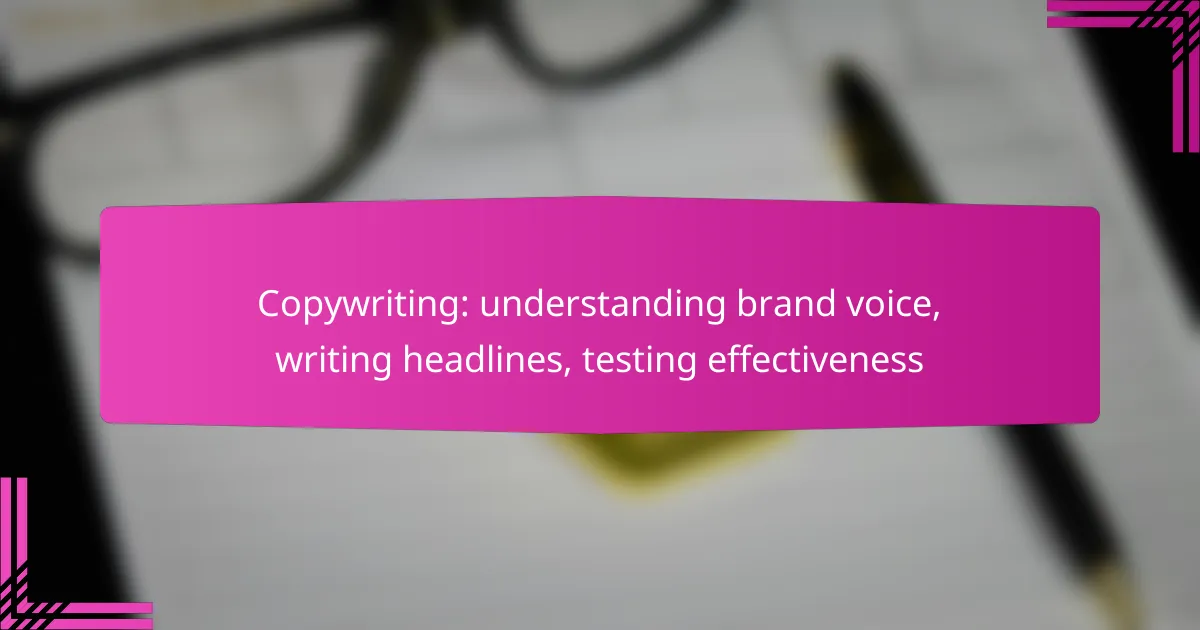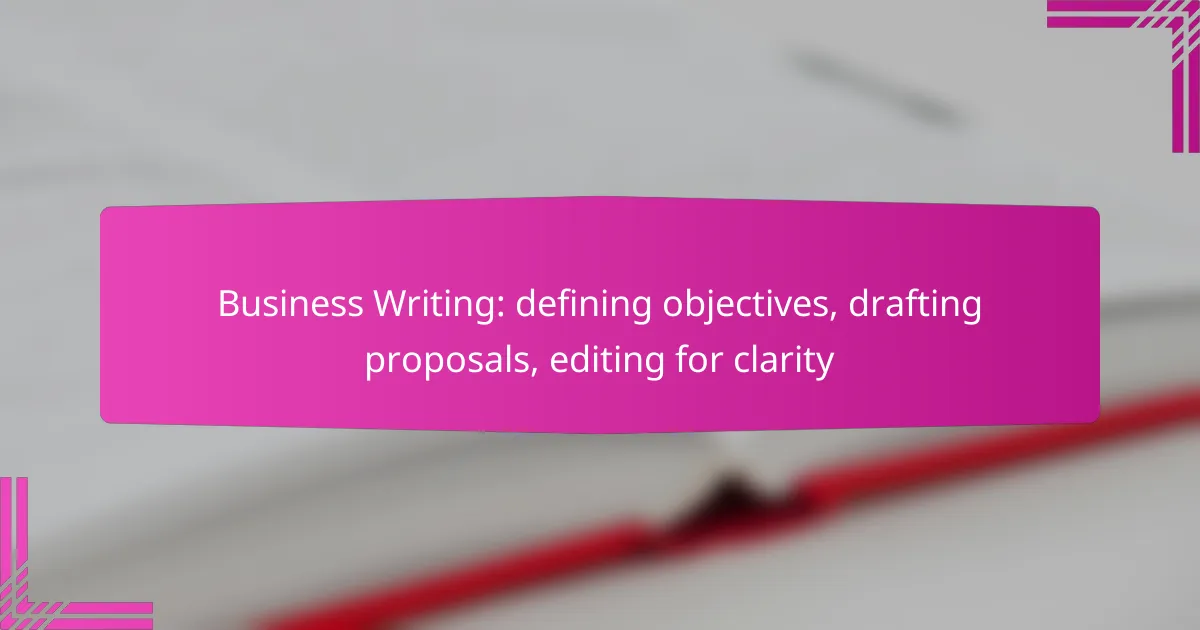Mastering the art of journalism requires skillful interviewing, diligent fact-checking, and crafting compelling leads. Conducting effective interviews in Australia hinges on preparation and understanding local communication styles, while fact-checking ensures the accuracy of reported information. A strong lead not only captures readers’ attention but also encapsulates the story’s essence, making it vital for engaging news writing.

How to conduct interviews effectively in Australia?
Conducting interviews effectively in Australia involves thorough preparation, establishing a connection with interviewees, and asking the right questions. Understanding local customs and communication styles can enhance the interview process and yield richer insights.
Preparation techniques
Effective interviews start with solid preparation. Research the interviewee’s background, the topic of discussion, and any relevant current events. This knowledge allows you to formulate informed questions and anticipate potential responses.
Creating an outline of key topics and questions can help guide the conversation while remaining flexible to explore unexpected areas. Aim for a balance between structured questions and open-ended prompts to encourage detailed responses.
Building rapport with interviewees
Establishing rapport is crucial for a successful interview. Begin with a friendly greeting and small talk to make the interviewee comfortable. A relaxed atmosphere encourages openness and honesty.
Active listening is key; show genuine interest in their responses and validate their feelings. Use their name during the conversation and maintain eye contact to foster a connection.
Types of interview questions
There are several types of questions to consider when conducting interviews. Open-ended questions encourage detailed responses, while closed questions can help clarify specific points. For example, asking “What inspired you to pursue this career?” invites a narrative, while “Did you face any challenges?” seeks a straightforward answer.
Probing questions are also useful for digging deeper into responses. For instance, if an interviewee mentions a significant event, follow up with “Can you elaborate on that experience?” to gain more insight.
Recording and note-taking methods
Recording interviews can enhance accuracy and allow for better focus during the conversation. Always seek permission before recording. Digital recorders or smartphone apps are common tools, but ensure you have backup methods in case of technical issues.
Note-taking is another effective method, especially for capturing key points quickly. Use shorthand or bullet points to jot down important quotes or ideas. After the interview, review your notes promptly to ensure accuracy and fill in any gaps while the conversation is still fresh in your mind.
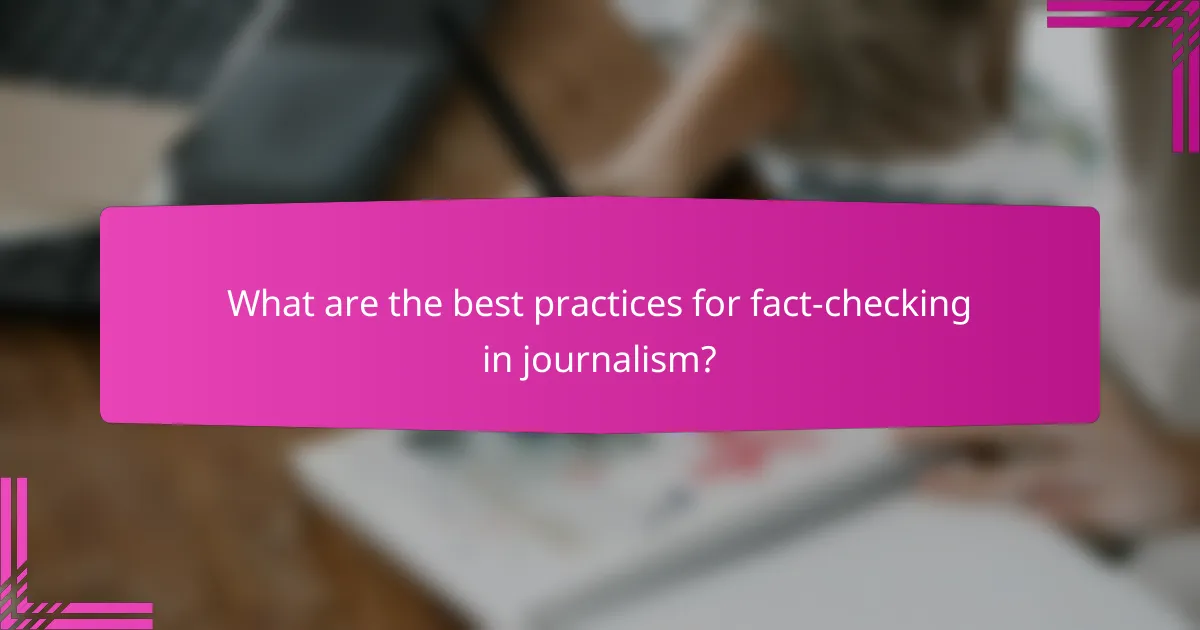
What are the best practices for fact-checking in journalism?
Effective fact-checking in journalism involves verifying information through credible sources and reliable methods. This process is crucial for maintaining accuracy and trustworthiness in reporting.
Utilizing reliable sources
To ensure the accuracy of information, journalists should prioritize using reliable sources such as academic publications, government reports, and established news organizations. These sources typically undergo rigorous editorial processes, making them more trustworthy.
When evaluating a source, consider its reputation, expertise, and potential biases. For instance, a peer-reviewed journal article is generally more credible than a personal blog post.
Verification tools and software
Journalists can enhance their fact-checking efforts by using various verification tools and software. Tools like Snopes, FactCheck.org, and PolitiFact provide databases of verified claims and can help identify misinformation.
Additionally, software like Google Reverse Image Search can verify the authenticity of images, while tools like ClaimCheck can assist in tracking the accuracy of statements over time.
Cross-referencing information
Cross-referencing information involves checking multiple sources to confirm facts. This practice helps identify discrepancies and provides a more comprehensive understanding of the topic at hand.
When cross-referencing, aim to consult at least three independent sources. If two or more sources agree on a fact, it is more likely to be accurate. However, be cautious of echo chambers where similar sources may reinforce misinformation.
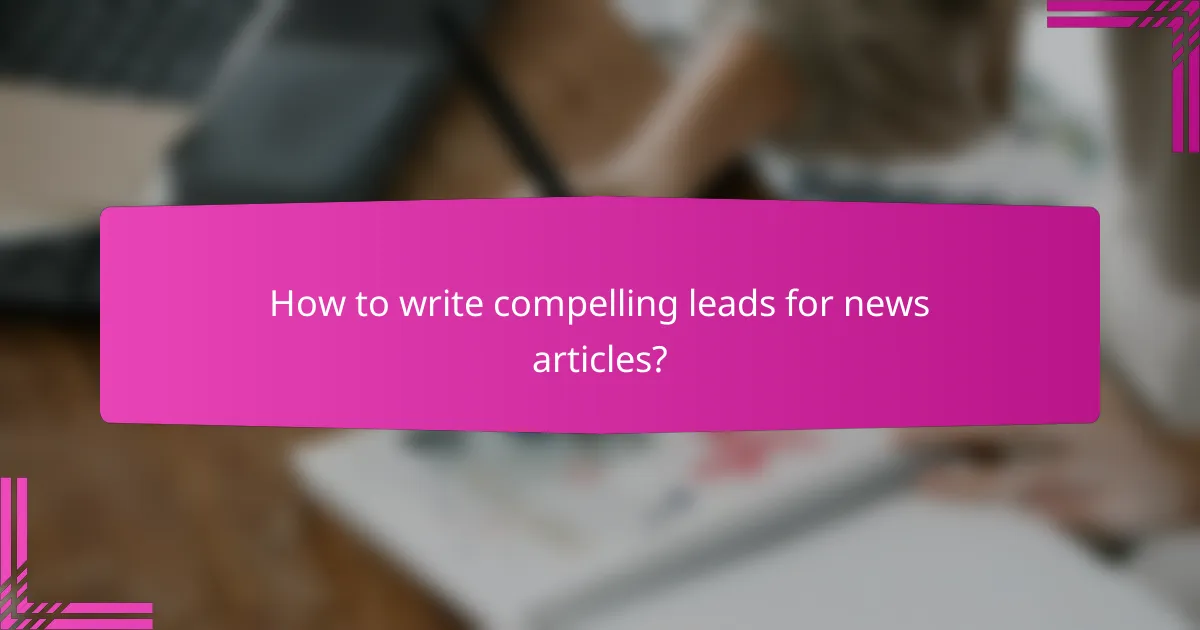
How to write compelling leads for news articles?
Compelling leads grab readers’ attention and summarize the essence of the story. A strong lead sets the tone and encourages further reading, making it crucial for effective news writing.
Types of lead structures
There are several lead structures that journalists can use, including summary leads, anecdotal leads, and question leads. Summary leads provide the essential facts in a straightforward manner, while anecdotal leads tell a brief story to draw in the reader. Question leads pose a question to engage curiosity but should be used sparingly to avoid sounding gimmicky.
Choosing the right structure depends on the story’s content and the target audience. For breaking news, a summary lead is often most effective, while feature stories may benefit from a more creative approach.
Incorporating the 5 Ws
The 5 Ws—who, what, when, where, and why—are fundamental to crafting a strong lead. Including these elements ensures that readers quickly grasp the key details of the story. For instance, a lead might state, “Local authorities (who) reported a fire (what) on Main Street (where) at 3 PM (when), raising concerns about safety (why).” This structure provides a clear and concise overview.
When writing leads, prioritize the most critical information, as not all 5 Ws need to be included. Focus on what is most relevant to the audience and the story’s context.
Engaging the audience
To engage the audience, leads should evoke emotion or curiosity. Using vivid language or surprising facts can make a lead more compelling. For example, instead of stating, “A new park opened,” consider, “Families flocked to the newly opened park, where laughter and joy filled the air.” This approach paints a picture and invites readers to learn more.
Additionally, consider the audience’s interests and the story’s significance. Tailoring the lead to resonate with readers can increase engagement and encourage them to continue reading. Avoid jargon and keep the language accessible to ensure clarity.
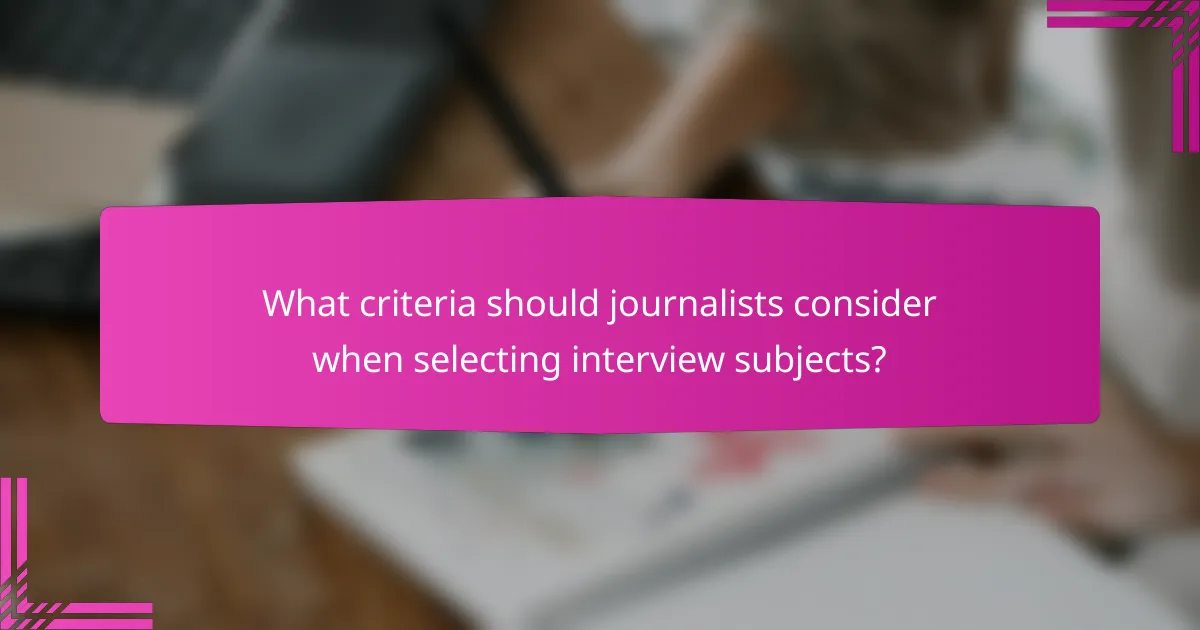
What criteria should journalists consider when selecting interview subjects?
Journalists should prioritize relevance, expertise, and diversity when selecting interview subjects. Choosing the right individuals can significantly enhance the quality and depth of a story.
Relevance to the story
Interview subjects must have a direct connection to the story’s topic. This ensures that their insights and experiences provide valuable context and information that enrich the narrative.
Consider the subject’s role or expertise related to the story. For instance, if covering a local environmental issue, interviewing a city official, a scientist, and a community activist can provide a well-rounded view.
Diversity of perspectives
Diversity in interview subjects is crucial for presenting a comprehensive view of the story. This includes varying backgrounds, experiences, and opinions that can challenge dominant narratives and highlight underrepresented voices.
Strive to include perspectives from different demographics, such as age, gender, ethnicity, and socioeconomic status. This approach not only enhances the story’s credibility but also resonates with a broader audience.

How to choose the right fact-checking tools?
Selecting the right fact-checking tools involves assessing their reliability, ease of use, and the specific needs of your project. Consider platforms that are widely recognized and offer features that align with your fact-checking requirements.
Popular fact-checking platforms
Several platforms are well-regarded in the field of fact-checking. Notable examples include Snopes, FactCheck.org, and PolitiFact. These sites provide extensive databases of verified information and are frequently updated to reflect current events.
In addition to these, tools like ClaimBuster and Full Fact focus on specific types of claims and offer unique functionalities, such as automated claim detection and real-time fact-checking. Choosing a platform often depends on the type of content you are working with.
Features to look for
When evaluating fact-checking tools, prioritize features such as user-friendly interfaces, comprehensive databases, and the ability to cross-reference sources. A good tool should allow you to quickly verify claims with minimal effort.
Additionally, consider tools that offer integration with other software, like content management systems or social media platforms. This can streamline your workflow and enhance efficiency. Look for platforms that provide clear citations and sources, as transparency is crucial in maintaining credibility.

What are the emerging trends in journalistic interviewing?
Emerging trends in journalistic interviewing focus on integrating technology and enhancing audience engagement. These developments are reshaping how interviews are conducted and how journalists connect with their audiences.
Use of technology in interviews
Technology is increasingly utilized in journalistic interviews, allowing for remote conversations through video conferencing tools and instant messaging platforms. This shift enables journalists to connect with sources across the globe without the constraints of travel, making interviews more accessible.
Moreover, tools like transcription software and AI-driven analytics help streamline the interview process. Journalists can quickly analyze responses and extract key quotes, enhancing the efficiency of their reporting.
Shifts in audience engagement
As audiences become more interactive, journalists are adapting their interviewing techniques to foster engagement. This includes incorporating audience questions into interviews, allowing for real-time feedback and participation, which can lead to more dynamic discussions.
Additionally, social media platforms are becoming vital for promoting interviews and gathering public opinion. Journalists can gauge audience interests and tailor their questions accordingly, ensuring that the content resonates with viewers and readers.

How can journalists improve their writing leads?
Journalists can enhance their writing leads by focusing on clarity, conciseness, and engagement. A strong lead captures the essence of the story while drawing readers in, setting the tone for the entire piece.
Understanding the purpose of a lead
The purpose of a lead is to provide a brief summary of the most important aspects of a story. It should answer key questions such as who, what, when, where, why, and how, giving readers a clear idea of what to expect. A well-crafted lead not only informs but also intrigues, encouraging further reading.
Types of leads
There are several types of leads that journalists can use, including summary leads, anecdotal leads, and question leads. Summary leads present the main facts directly, while anecdotal leads tell a brief story to illustrate the main point. Question leads pose a question to engage the reader’s curiosity.
Crafting an effective lead
To craft an effective lead, journalists should start with the most compelling information, ideally within the first sentence. Using active voice and strong verbs can make the lead more dynamic. Avoid jargon and overly complex sentences to ensure accessibility for a broad audience.
Common pitfalls to avoid
Common pitfalls in writing leads include being too vague, overly complex, or failing to engage the reader. Journalists should avoid clichés and generic statements that do not add value. Additionally, leads should not be too long; a concise lead typically ranges from 20 to 30 words.
Testing and revising leads
After drafting a lead, journalists should test its effectiveness by considering how it resonates with potential readers. Revising leads based on feedback or clarity can significantly improve the overall quality of the article. A good practice is to write multiple versions and select the strongest one.

